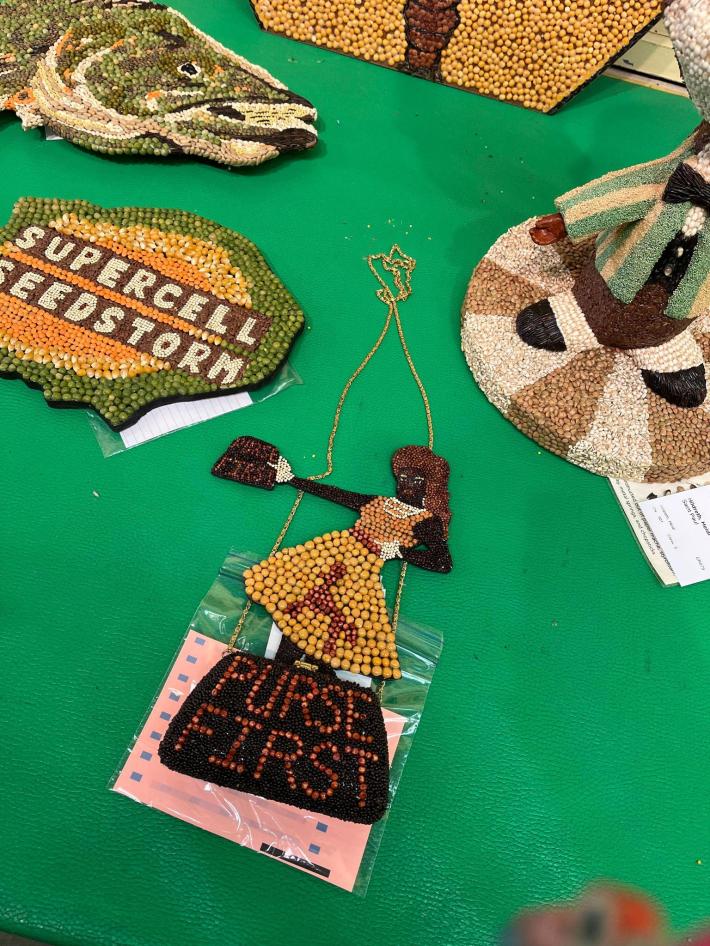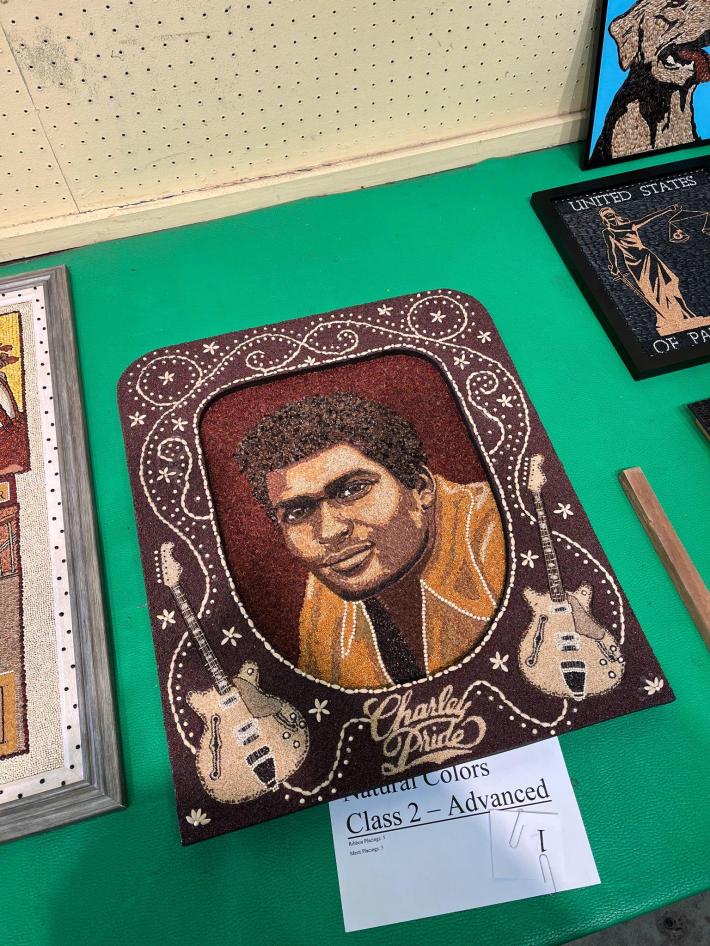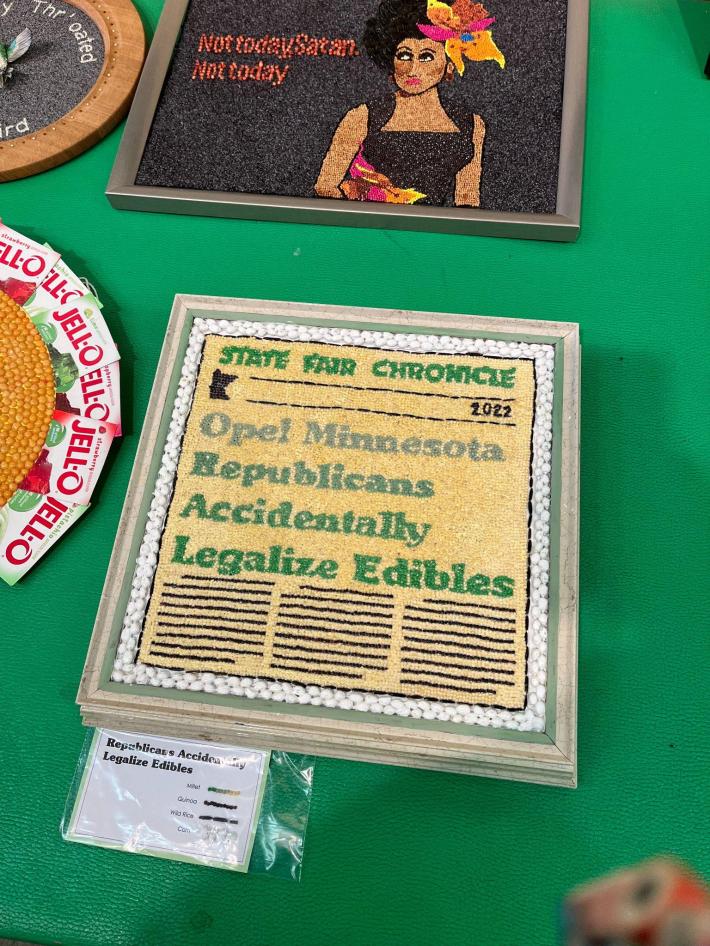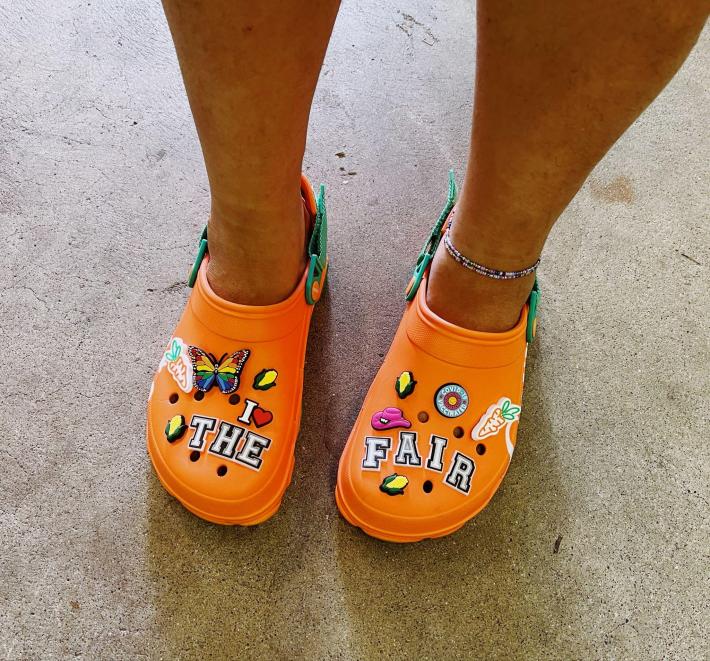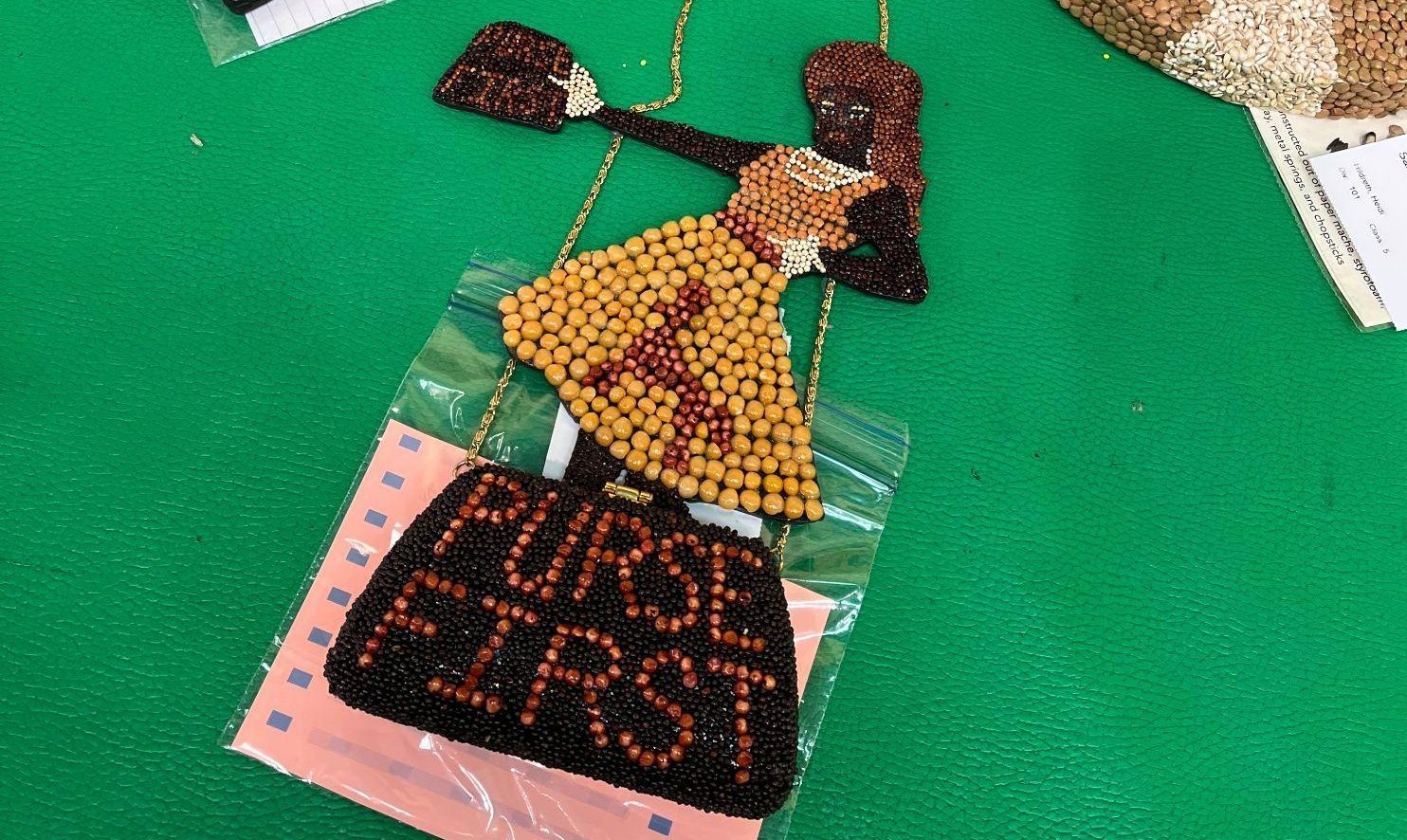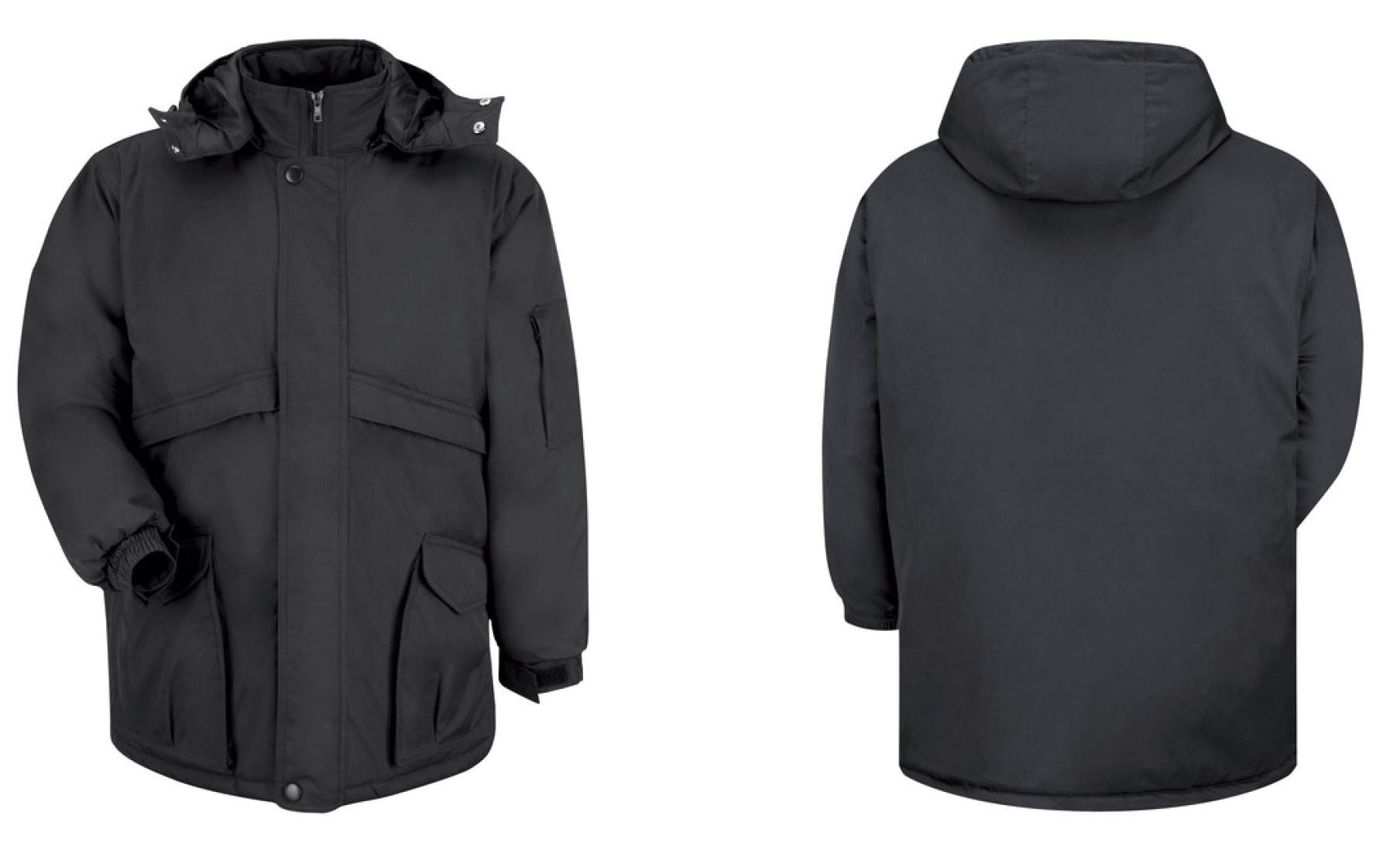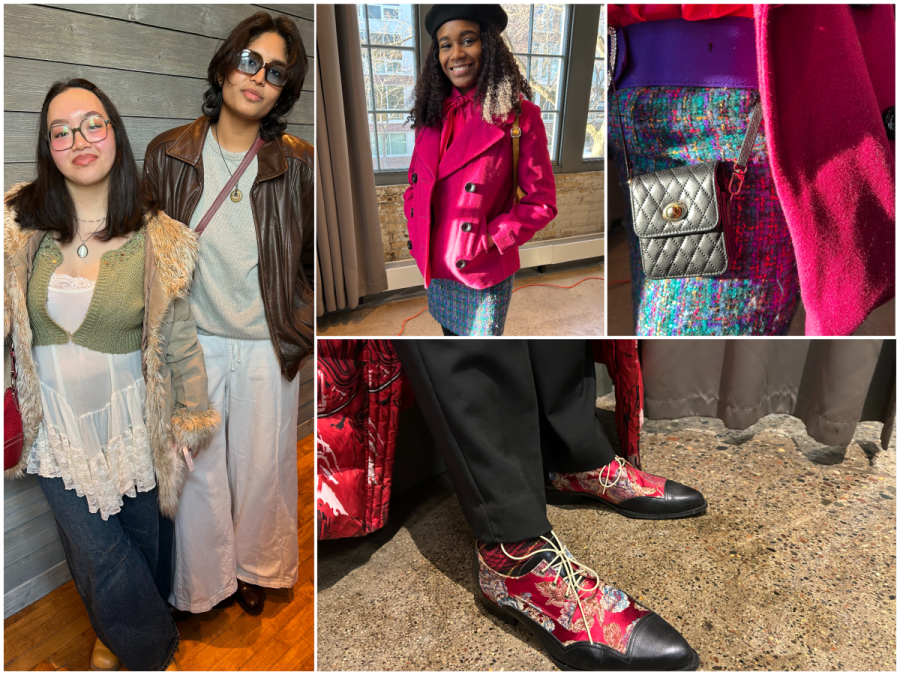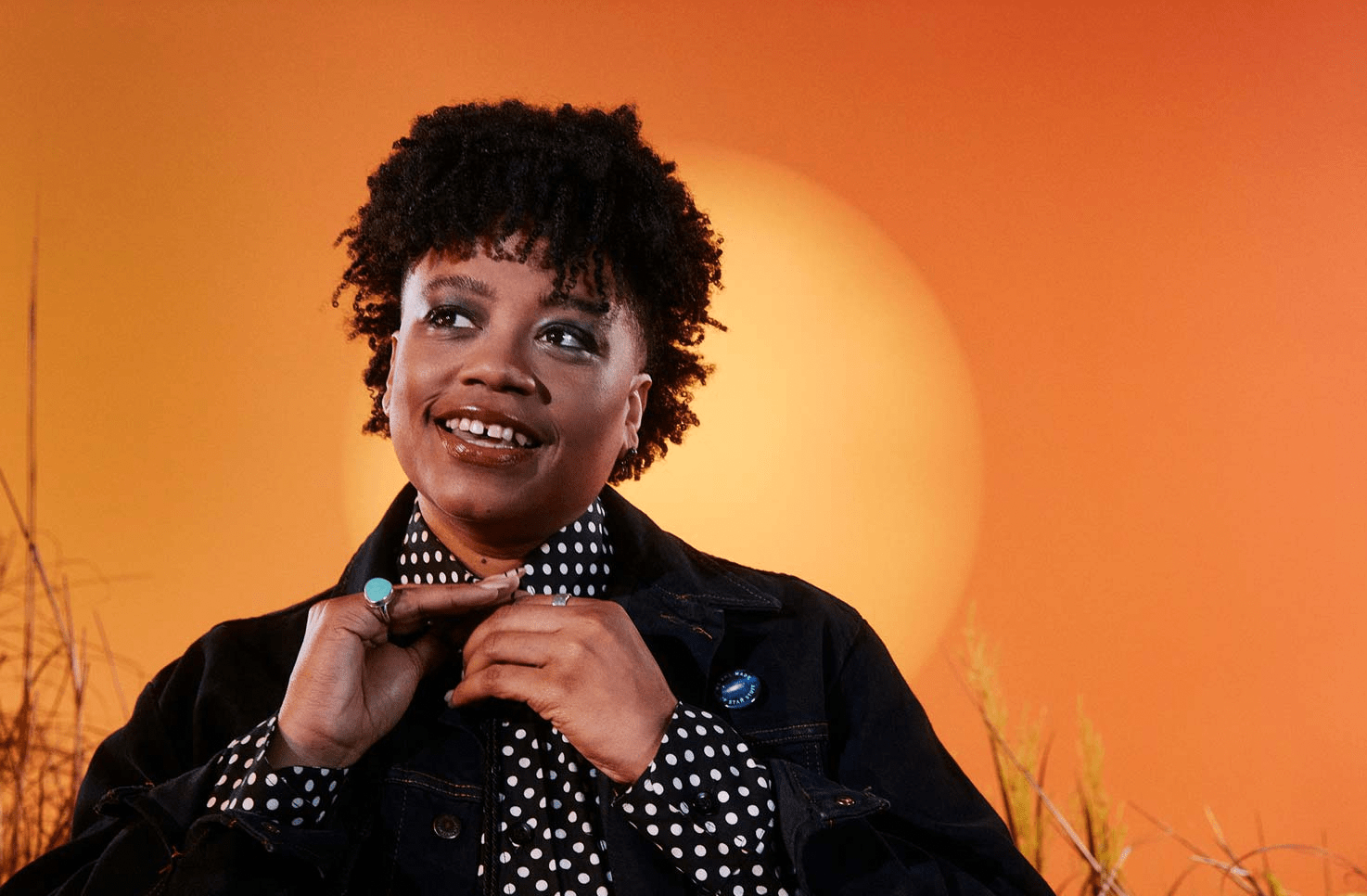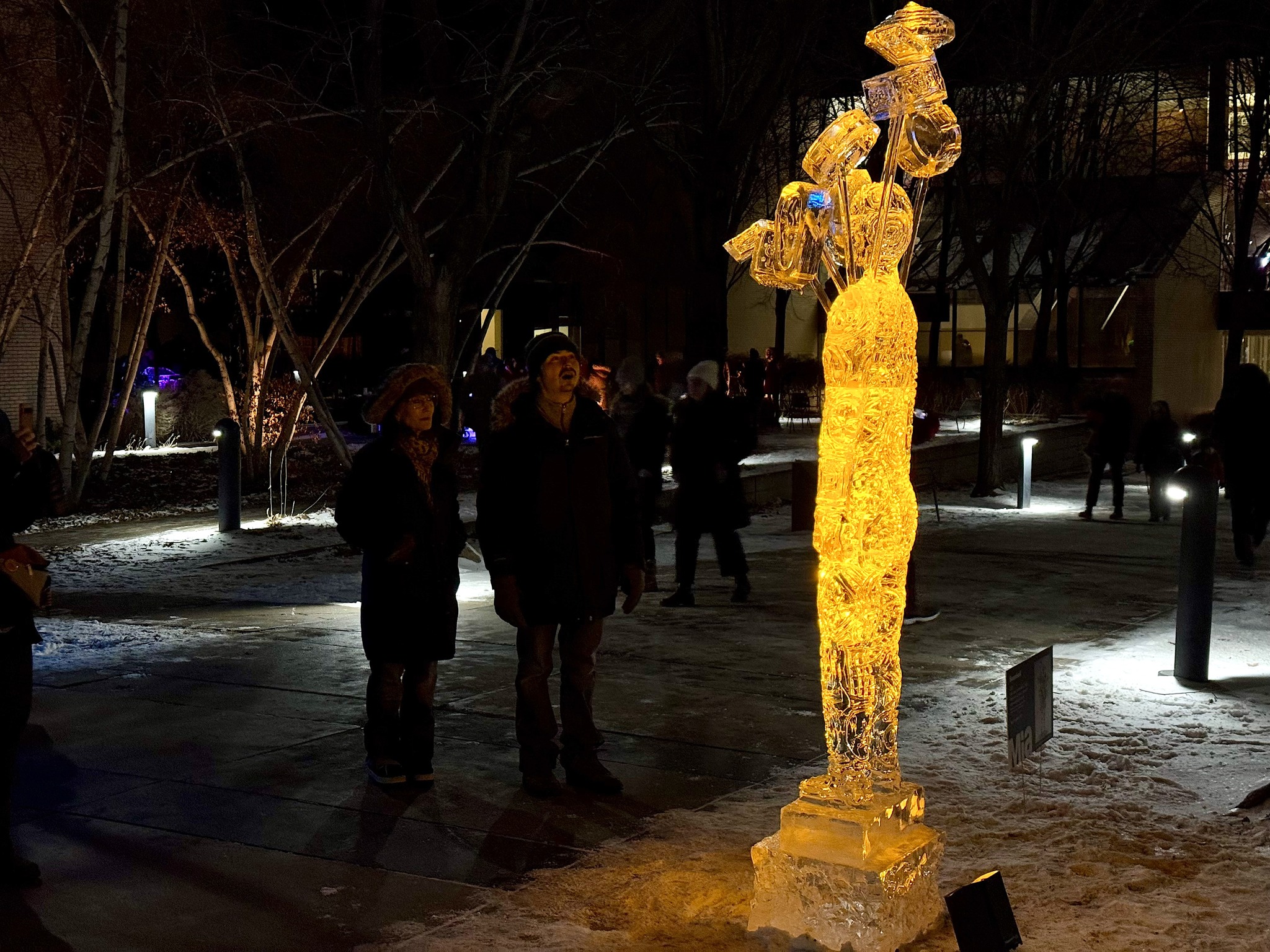Everyone knows the Agriculture Horticulture building on the State Fairgrounds is, like me, literally that bitch. Pass through the beautiful architecture of its entryway and everything from seed bags to walls of corn, scarecrows to flowers are waiting inside. (The only fair building I love more than this one is Fine Art, because they have the best bathrooms.) The building celebrates its 75th year this fair season, and the superintendent and king of all things corn, Mr. Ron Kelsey from Lamberton, Minnesota, invited me to judge crop art.
If you’re thinking “Um, but why YOU?”—first of all, that’s rude. Second of all Ron knows me through his son Damon and knows I have an obsession with the fair and, as an artist and crafter myself, would be honored to judge. Ron Kelsey is a man who lives and breathes corn, and the ear of corn tattooed on his forearm tells you everything you need to know about him. He’s been to the fair every single year since he was 7 except when there was no fair in 2020. (Remember? ‘Cause of the pandemic we’re still in?)
Kelsey has over 1,000 seed bags in his personal collection, the largest in Minnesota, and a few hundred are on display in the building. He’s only a few years older than the building he manages on the fairgrounds, and he and his crew move like a well-oiled machine. It's a huge family affair—his wife, sister, son, brother-in-law were all there helping.
I was one of just five judges. We were all different ages and genders and with different specialties. For instance, Roger Wippler is a professional seed identifier who works with crop research from the U of M, and he let us know if the seeds were used correctly or not. I was the youngest and the only Black person (I was told Black people have rarely been judges), and I was replacing a former judge who recently passed away—I don’t think adding new blood is something they do too often. I have a feeling I'm the first Black woman with 613 color hair to judge crop art, and I demand to be carved in butter for that alone. But I digress!
We were told to judge based on characteristics like originality, display, and neatness, and there are multiple categories, including natural, painted and dyed, special occasion, wearable art, and a huge kids’ entry table. I wish I could have given them all merit badges, but we only had so many to spare. I quickly learned that in many cases, it wasn't the art itself or use of seeds that were the main focus, but the message.
Since just about any and everything that follows the rules makes it to the judging table and also the display wall, it’s safe to say many artists just want to make sure the hundreds of thousands of people who travel through the crop art section will be forced to take their message in. And why not? How many times can you say you all but coerced some conservative from middle-of-nowhere Minnesota look at your uterus art in favor of abortion? That's not something that person would go out and see on their own, but you made them, because this is the fucking Minnesota State Fair crop art contest and you’re gonna learn today.
Kelsey confirmed that every year, emails come in complaining about outlandish crop art that’s been displayed. He simply thanks them for their feedback and keeps it moving. You can’t please everyone, and he understands he cannot silence people for their art—that’s not his place. This is a space for everyone to have an opinion, even one that you don’t like. That said, if you’re visiting and see a piece of art you want for yourself? Ask the staff for an artist contact, and if the artist is interested in selling they will contact you directly.
As a pop culture encyclopedia, I was able to help pick winners not only based on the time and effort they put into their art, but also on their work’s originality and context of their art—the more out of the box, the more diversity the better. I could tell my fellow judges whether we were looking at a tribute to a Star Trek legend, a familiar meme, or an obscure reference only people with a certain set of skills can decipher. (Looking at you, winking Tom cat whose message spells out ACAB.) Once I mentioned the references, the others could see the art in a different light too. I could immediately recognize my contribution to judging and why I needed to be there reclaiming a space that probably wasn’t for me 75, 50, or even 25 years ago.
Crop art isn’t just native to Minnesota, of course, but we do it bigger and better than anyone else. (Source: me.) It was a great honor to judge this year, and I'm really hoping to come back next year. Here are some best practices if you’re going to considering entering in the future:
- The more subversive your art the better. Push the envelope, but no hate speech or anything offensive, of course. Don’t be a fucking weirdo. Be as original as possible—even the frame can be considered.
- Traditional shapes not your thing? There are categories for those that don’t fit in the standard frame. Wearable art, which included a crown and roller skates this year, was a huge stand-out and that category could really use a ton more entries.
- Follow all the rules so your art makes the floor for judging and hanging. Remember: All submitted art makes it on the wall for viewing, no matter if you receive a ribbon or not.
- Encourage your kids to participate. It’s fun and would definitely make for a cool memory.
All photos by GIgi Berry.
